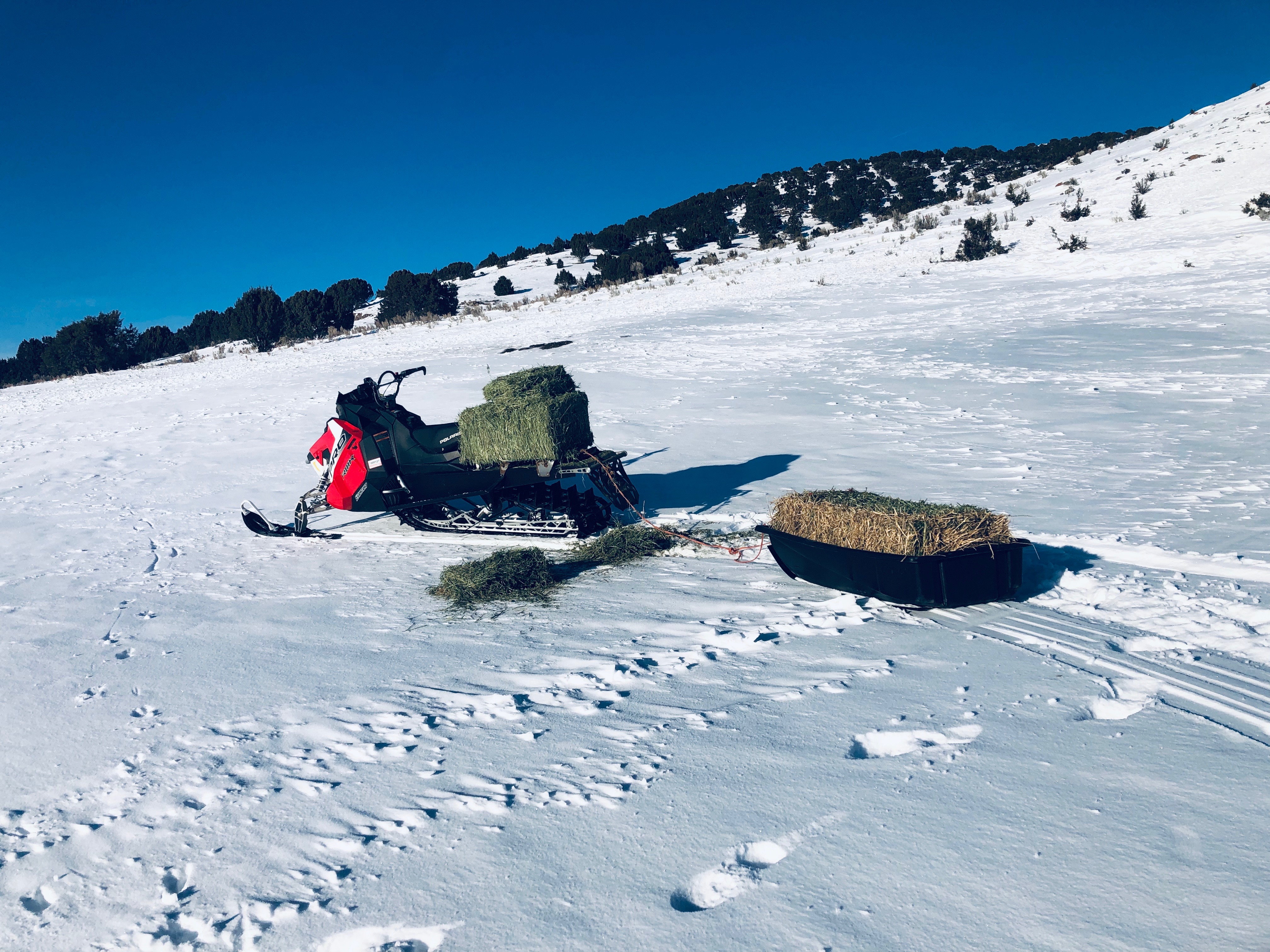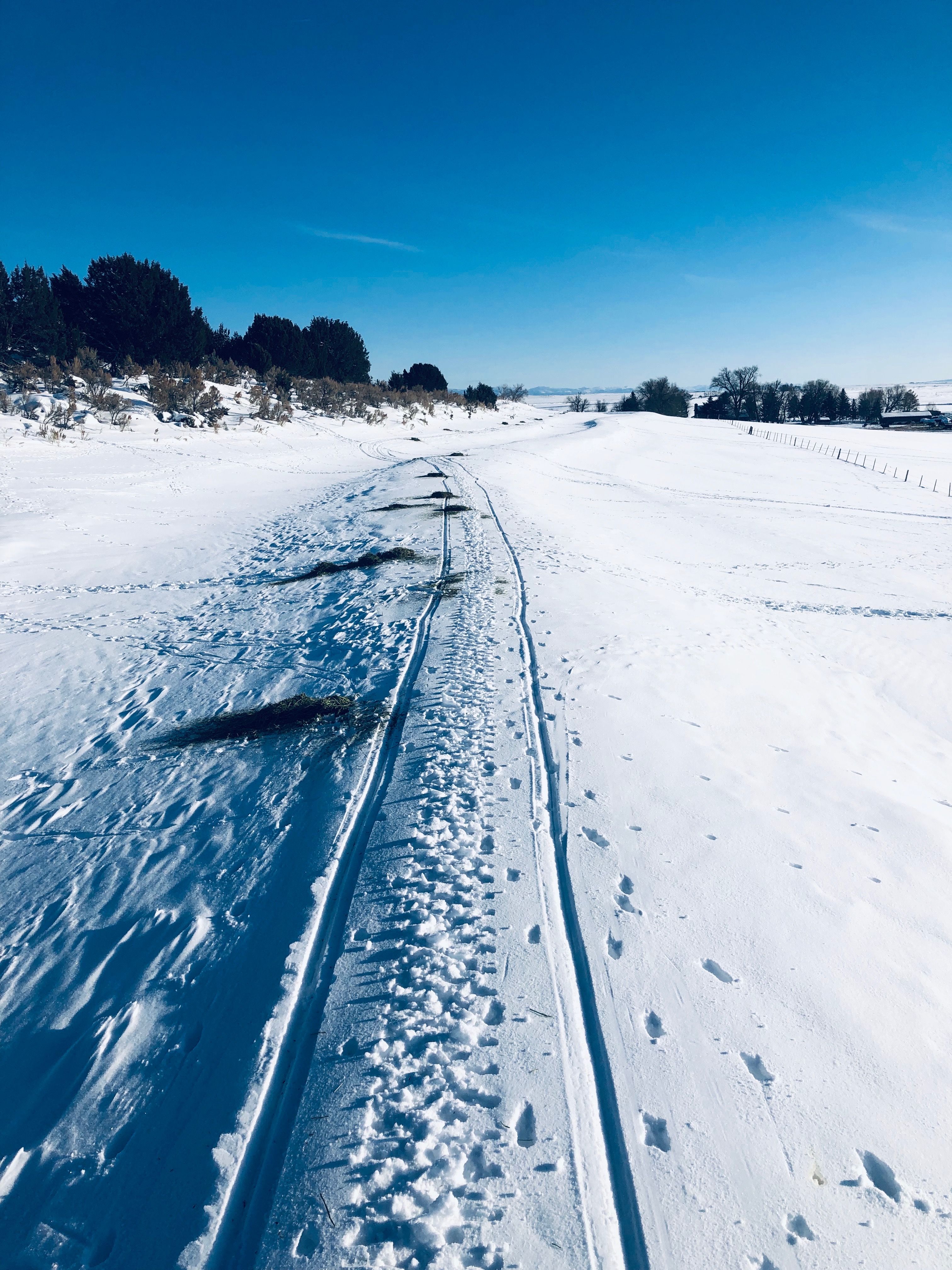The Idaho Department of Fish and Game with input from the Southeast Idaho Winter Feeding Advisory Committee (WFAC) has authorized a feed site on the west side of the Ninety Percent Range in Caribou County to bait approximately 200 elk from a landowner’s property.
No winter feeding emergency has been declared for wildlife in southeast Idaho. This baiting effort is helping to alleviate interaction between a herd of elk and a landowner’s livestock. Elk will sometimes come into livestock feedlines, which is concerning because the disease, brucellosis, can be transmitted between elk and livestock.
The WFAC (composed of citizen volunteers) and Idaho Fish and Game has been closely monitoring the weather and its impacts on wintering wildlife throughout the region this winter. Both the WFAC and Fish and Game staff have been making wildlife observations in the field, and reporting weather conditions, big game animal movements, and wildlife/human conflicts during regular meetings to discuss winter feeding.
Big game herds are handling the weather
Currently, big game animals appear to have good body conditions for this time of year, and they are fairly well spread out across their winter ranges. Though snow is deep in some areas, exposed vegetation, access to areas with shallow snows, or windswept slopes, are available throughout the region.
Prior to late February snow storms, the region had experienced storms followed by warmer temperatures and melting snow, which afforded big game animals fairly consistent access to vegetation, and good mobility.
That means deer and elk were able to retain more of their fat reserves than if the weather and snow conditions had been more severe. Of course, the advisory committee and wildlife managers will continue to closely monitor weather and snow conditions throughout the region until spring and/or warmer weather arrives.
Why not feed?
Even though the Southeast Region may not have hit emergency situation for feeding yet, some people may ask why not do it anyway? What can it hurt?
Because of the pitfalls associated with winter feeding, feeding activities are only considered when a series of emergency criteria are met.
Factors include:
- deep snow depths
- subzero daytime temperatures
- crusted snow
- poor animal conditions
- number of animals
- winter range condition
- the expected remaining days of winter conditions
It often takes a combination of factors for an emergency situation to exist and winter feeding to begin.
Feeding can create more problems
There are several reasons Fish and Game does not start wide-spread feeding during a normal winter.
First, winter conditions do not typically create a “lack of feed” issue for game as much as as a “fat burning” issue. Ongoing research shows that if animals, especially fawns and calves, enter winter with a sufficient amount of fat, they can survive the winter months with little additional feed so long as they have access to critical winter range that provides refuge from disturbance, cold temperatures, and deep snow.
Second, winter feeding of big game is often detrimental to wildlife. When animals congregate at feed sites, the transmission of diseases is enhanced. Think of what happens when one or two sick kids go to school and sit in a confined classroom with other students. It’s not long before others get sick.
Concentrated animals also aggressively compete for feed, even when dispersed properly, and often young animals lose out to the adults. Animals concentrated at feeding sites can also attract predators, such as mountain lions and coyotes, because they are able to hunt in one specific area that has consistent prey.
Natural forage in the immediate vicinity of a feed site becomes overused and damaged, and may not recover, especially if the same feed site is used for wildlife feeding year after year.
Feed sites can stop animals and discourage them from finishing their traditional migratory routes. Animals will become accustomed to the feed sites and begin looking for them year after year rather than return to their traditional winter range.
Unauthorized winter feeding or baiting efforts by the public should not be conducted because it can create more problems than it solves. Also, unauthorized winter feeding in counties that border Wyoming is against Idaho Department of Agriculture rules due to brucellosis concerns, and can result in a citation.
If you have any concerns about wintering big game animals in the Southeast Region, issues with wildlife depredations, or questions about winter feeding, contact the regional Fish and Game office in Pocatello at (208) 232-4703.

In late February, a snow machine with an attached sled was used to spread a bait line of hay in Caribou County. The bait line was used to draw about 200 elk away from a cattle operation on private property to an authorized bait site set up by Idaho Fish and Game. Photo courtesy Raliegh Scott with IDFG.

A line of hay has been scattered to draw about 200 elk from private property in Caribou County to an authorized feed site. The temporary feed site is intended to alleviate interaction between the elk and nearby cattle.

